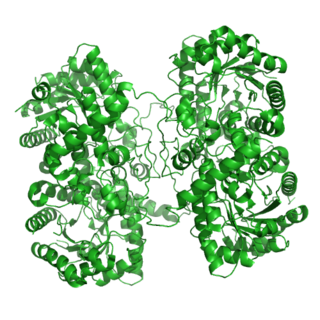Top Qs
Timeline
Chat
Perspective
Betaine—homocysteine S-methyltransferase
Class of enzymes From Wikipedia, the free encyclopedia
Remove ads
In enzymology, a betaine-homocysteine S-methyltransferase also known as betaine-homocysteine methyltransferase (BHMT) is a zinc metallo-enzyme that catalyzes the transfer of a methyl group from trimethylglycine and a hydrogen ion from homocysteine to produce dimethylglycine and methionine respectively:[2]
BHMT belongs to the family of transferases, specifically those transferring one-carbon group methyltransferases. It participates in the metabolism of glycine, serine, threonine, and methionine.
Remove ads
Isozymes
In humans, there are two isozymes, BHMT[3][4] and BHMT2,[5][6] each encoded by a separate gene.
Remove ads
Tissue distribution
BHMT is expressed most predominantly in the liver and kidney.[7]
Clinical significance
Mutations in the BHMT gene are known to exist in humans. Anomalies may influence the metabolism of homocysteine, which is implicated in disorders ranging from vascular disease, autism, and schizophrenia to neural tube birth defects such as spina bifida.
See also
References
Further reading
External links
Wikiwand - on
Seamless Wikipedia browsing. On steroids.
Remove ads






